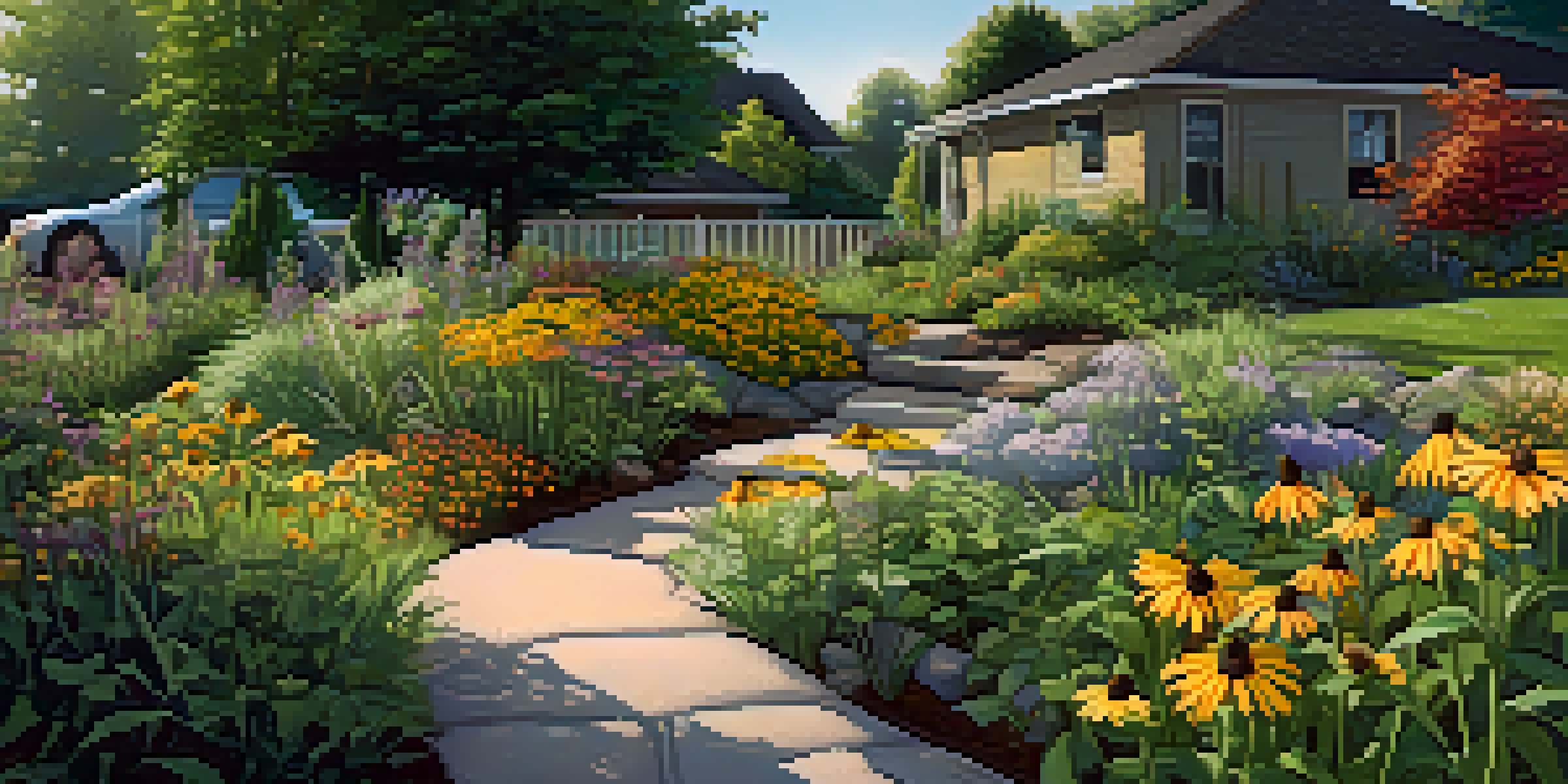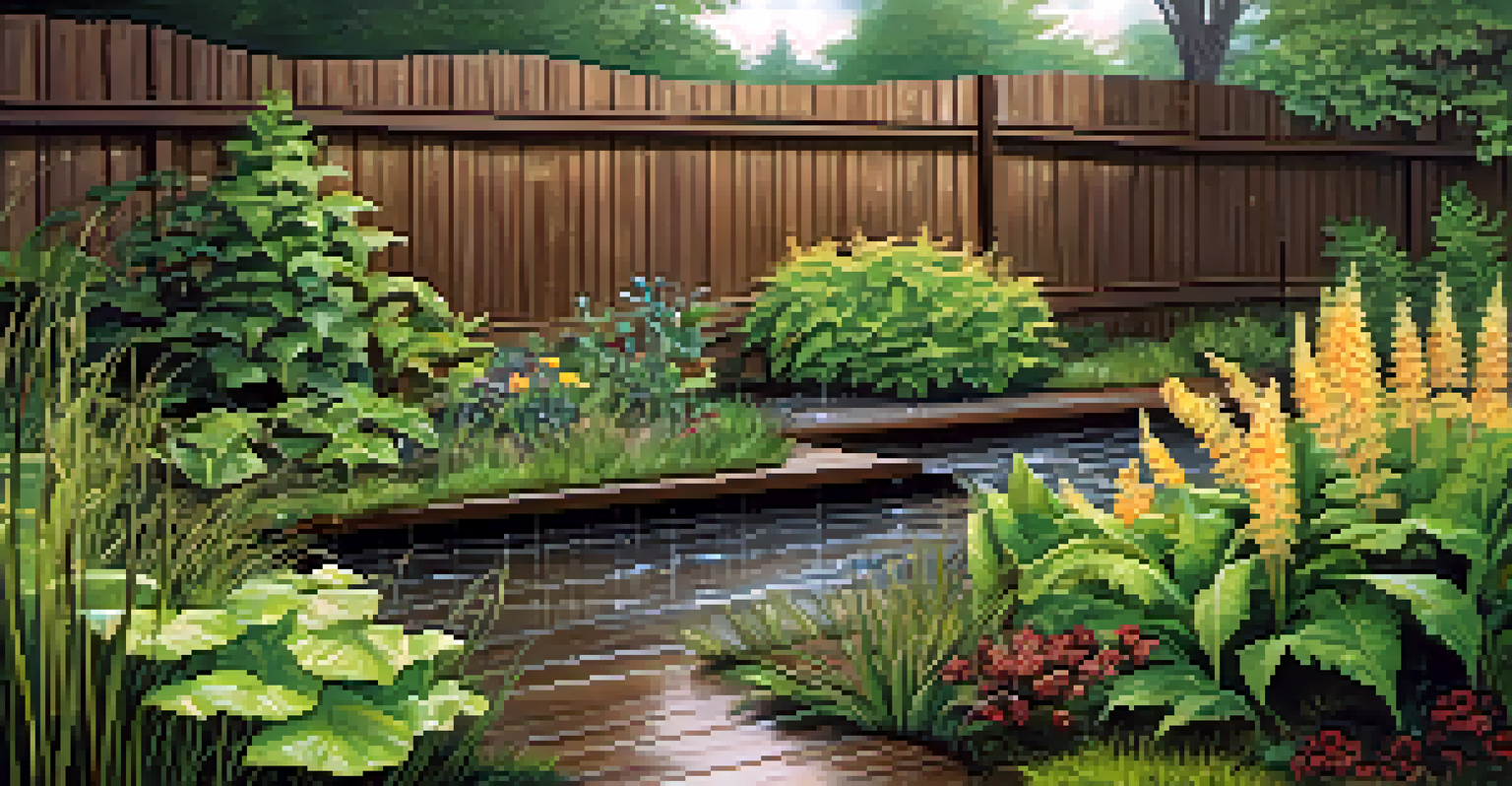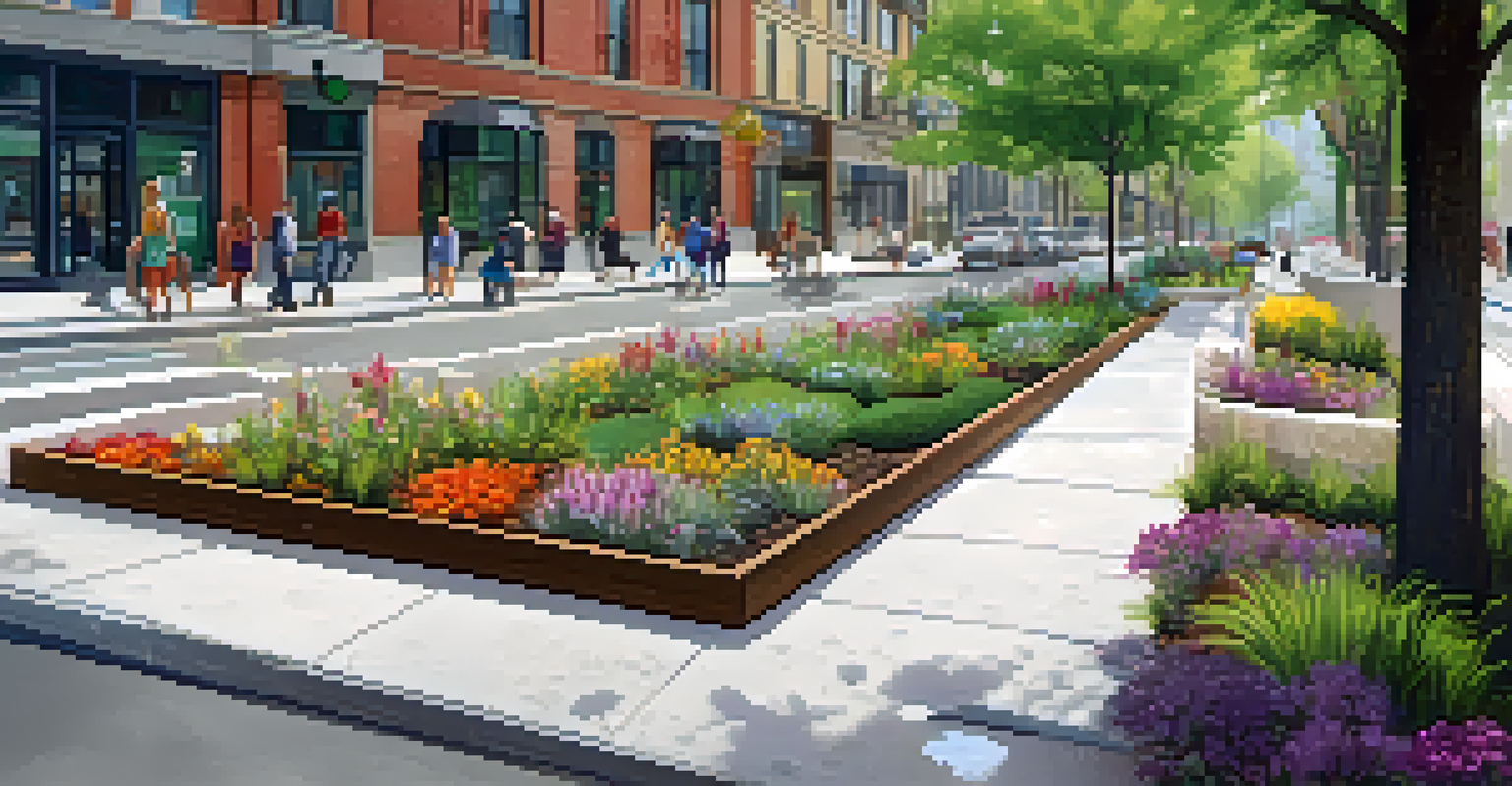Using Rain Gardens to Manage Stormwater Sustainably

Understanding Stormwater and Its Challenges
Stormwater refers to the water that accumulates during and after rain events. When it rains, this water flows over surfaces like roads and roofs, picking up pollutants along the way. This runoff can lead to flooding, erosion, and water quality issues, creating significant challenges for urban areas.
The environment is where we all meet; where we all have a mutual interest; it is the one thing all of us share.
As cities grow, natural land is replaced with impermeable surfaces that hinder water absorption. This shift increases the volume and speed of stormwater runoff, which can overwhelm drainage systems. Consequently, managing this excess water sustainably is vital for environmental health and urban planning.
Understanding these challenges sets the stage for innovative solutions like rain gardens. By using natural processes, we can mitigate stormwater impacts while enhancing green spaces in our communities.
What is a Rain Garden?
A rain garden is a planted depression that temporarily holds and absorbs rainwater runoff from impervious surfaces. These gardens are designed to collect water from driveways, roofs, and sidewalks, allowing it to soak into the ground. The plants and soil in the garden work together to filter pollutants and improve water quality.

Typically filled with native plants, rain gardens are both functional and beautiful. Native plants are adapted to local conditions, requiring less maintenance and water. This makes rain gardens a practical choice for homeowners looking to enhance their landscapes sustainably.
Rain Gardens Manage Stormwater Effectively
Rain gardens capture and absorb runoff, reducing flooding and improving water quality in urban areas.
Incorporating a rain garden into your yard not only aids in stormwater management but also supports local wildlife by providing habitats. It becomes a space where nature and urban living coexist harmoniously.
Benefits of Rain Gardens for Stormwater Management
Rain gardens offer several environmental benefits, primarily by reducing the volume of stormwater runoff. By capturing rainwater, they allow it to infiltrate slowly into the soil, recharging groundwater supplies and decreasing the risk of flooding. This natural filtration system also helps remove contaminants before the water enters local waterways.
We won't have a society if we destroy the environment.
Moreover, rain gardens can help mitigate the urban heat island effect. By incorporating vegetation, they cool the surrounding area and improve air quality. This not only benefits the environment but also enhances the overall aesthetics of neighborhoods.
Beyond environmental advantages, rain gardens can also increase property values. Homebuyers are often attracted to eco-friendly features that contribute to a sustainable lifestyle, making rain gardens not just functional but financially wise investments.
How to Design a Rain Garden
Designing a rain garden involves several steps, starting with selecting an appropriate location. The ideal spot is usually near a downspout or drainage area, where it can collect runoff effectively. You'll want to ensure that the area has good drainage while avoiding any spots too close to trees with invasive roots.
Next, determine the size of your rain garden based on the amount of runoff it will manage. A general rule of thumb is to make it about 10% of the size of the area contributing runoff. This ensures it can handle the water volume during heavy rains.
Native Plants Enhance Rain Gardens
Utilizing native plants in rain gardens ensures low maintenance and supports local wildlife.
Finally, choose native plants that thrive in your local climate. These plants will not only survive during dry spells but will also flourish during wetter periods, creating a vibrant ecosystem that attracts pollinators and other wildlife.
Maintenance Tips for Your Rain Garden
While rain gardens are designed to be low-maintenance, they do require some care to ensure their effectiveness. Regularly check for weeds and remove them to prevent them from competing with your native plants. This simple step can keep your garden healthy and thriving.
Another important maintenance task is to monitor the drainage area. After significant rain, observe how the water flows and ensure that the garden can handle runoff efficiently. If you notice pooling or slow drainage, it might be time to amend the soil or adjust the plants.
Lastly, seasonal clean-up is essential. Removing debris and dead plant material can enhance the garden’s appearance and functionality. This simple effort can keep your rain garden looking its best while doing its job of managing stormwater.
Common Misconceptions About Rain Gardens
One common misconception is that rain gardens are just glorified puddles. In reality, they are precisely designed systems that promote water absorption and filtration. They look like beautiful gardens while effectively managing stormwater, proving that functionality and aesthetics can go hand in hand.
Another myth is that rain gardens attract mosquitoes due to standing water. However, when designed correctly, rain gardens should not hold water for long periods. The goal is for water to infiltrate the soil within a day, reducing the likelihood of mosquito breeding.
Rain Gardens Boost Property Values
Eco-friendly features like rain gardens can attract homebuyers, increasing property values in neighborhoods.
Finally, some believe that rain gardens require a lot of water or maintenance. In truth, native plants are adapted to local conditions, making them drought-resistant and requiring minimal upkeep. This makes rain gardens a practical choice for sustainable landscaping.
Real-Life Examples of Successful Rain Gardens
Many cities have successfully implemented rain gardens as part of their stormwater management strategies. For instance, Portland, Oregon, has integrated rain gardens throughout the city, leading to significant reductions in runoff and improved water quality. These gardens not only enhance the landscape but also serve as educational tools for residents.
Another great example is the city of Milwaukee, Wisconsin, where rain gardens are part of a larger green infrastructure initiative. The city has seen substantial improvements in managing stormwater and reducing flooding, showcasing how collective efforts can lead to community benefits.

These examples demonstrate that rain gardens are not just a niche solution; they can be part of a broader strategy for sustainable urban living. By adopting similar practices, other communities can enjoy the numerous benefits of rain gardens.